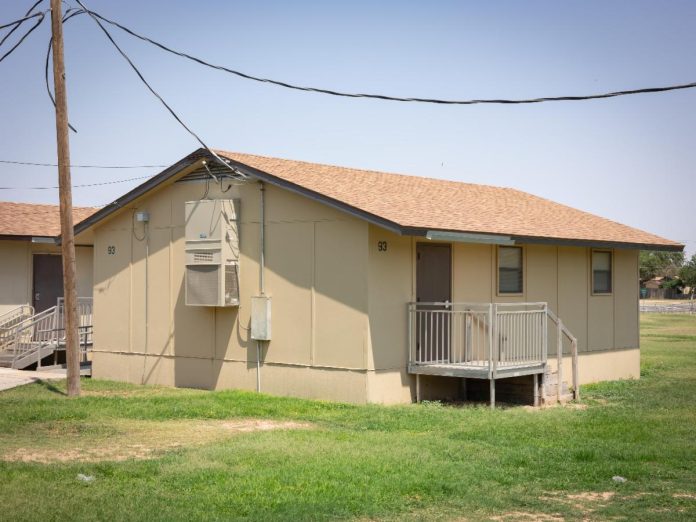
MIDLAND Midland ISD has a growing problem — literally.
“We anticipate MISD enrollment will grow by 4,200 students or more over the next 10 years,” said Superintendent Stephanie Howard in a news release.
MISD’s high schools are already above the capacities set many decades ago, long before the miracle of horizontal drilling and hydraulic fracturing opened our storied oilfields even wider and drew thousands of families to Midland seeking greater opportunities and better lives, the release said.
With so many new people already here and many more on the way the question remains: Can we fit more students in already-overcrowded facilities?
Portables: A temporary-turned-long-term solution
The growing wave of incoming students has been a struggle.
“We have not passed a sizable secondary bond since 2012, so we are already struggling with capacity issues and aging facilities,” Howard said, who saw firsthand the influx of new students back when she was principal at Legacy High School amid the early ’10s oil boom.
Howard returned to MISD in January. In her decade away, secondary and elementary campuses have implemented what’s meant to be a non-permanent solution that has only grown: portable classrooms.
MISD currently has 134 portables, those khaki-colored, shed-like buildings detached from main buildings that you’ve no doubt seen dot campuses districtwide. MISD has turned to portables for more than 25 years in response to Midland’s unprecedented growth.
Groundwork is underway for 1,200 housing lots within MISD’s district boundary with 10 active subdivisions under construction and seven more in the planning stages, according to the press release. It’s new housing for new families with new children in Midland.
Portables do not offer a viable solution for creating an impactful, permanent space for thousands of future Bulldogs and future Rebels. They are a bandage for overcrowding but don’t address the core issues in other key areas of student life: the size of the cafeteria and library; the number of restrooms; nor extracurricular facilities. Portables offer no solution for the additional parking and drop-off/pick-up locations needed to accommodate an increase in students.
Not built for tech
On July 20, 1969, Neil Armstrong and Buzz Aldrin made history when they were the first people to walk on the moon. About 20 years earlier, a new Midland High opened its doors on Illinois Avenue — long before the nascent computer technology that helped send men into space and a time when the tech landscape we have today only existed in the imaginations of science fiction writers and a handful of visionaries. In reality, MHS can’t support today’s technological demands.
For Legacy High, the situation is the same. LHS predates the moon landing by about a decade — and the debut of the iPhone in 2007 by about 40 years. The campus was not built to support today’s technology. And as MHS and LHS permanent structures age — along with their portables — so too does their ability to keep up with tech’s ever-quickening pace and evolution.
Keeping kids safe
Campus safety and security concerns have changed greatly and rapidly. Buildings weren’t designed with modern solutions in mind because neither the issues nor technology were reality back then
“As we work through this bond planning process and design future facilities, the integration of safety and security will be at the forefront of the team’s work,” Howard said in the release.
More kids in already-crowded spaces make monitoring more difficult, and placing students in detached portable classrooms only compounds this problem.
Solutions being considered
Across MISD, many campuses — particularly middle schools and high schools — are either at or over capacity. A solution is a combination of new facilities and grade reconfiguration.
MISD needs two new high schools that can accommodate 4,200 students each in order to meet future enrollment growth. By constructing new homes for the Rebels and the Bulldogs, former facilities, such as Midland Freshman and the current LHS campus, can be converted into middle schools, raising the number of campuses serving seventh and eighth graders to six or more, the release said.
Furthermore, this plan could see sixth graders moving into middle schools, opening many new seats at elementary schools, which would serve pre-kindergarten through fifth grade.
Ninth graders, who are currently at separate freshman high schools, would be integrated into the high schools, creating more traditional 9-12 facilities.
Now is the time to make more room
Growth at MISD is happening now.
Peak enrollment in the 2022-23 school year was 27,821 — an increase of more than 1,400 students in a single year. District demographers anticipate MISD will have more than 32,000 students in 2032-33, when today’s pre-kindergartners will be freshmen. At the current rate, there won’t be room for them — at least not in a permanent facility.
Now is the time to create more, permanent space.
Midland’s growth indicates that its economy is healthy, which has sustained for more than a decade and is expected to continue far into the future.
“We want to be prepared and ensure our facilities can support the growth we are seeing and anticipate in coming years,” Howard said, adding that MISD is committed to maintaining the small-town values that have long been a hallmark of the district.
“While Midland has grown, the small-town values and the way we work together and treat one another has not changed,” Howard said. “Even with the growth on our campuses, it is the daily interaction between teachers and students that creates the personal feel that is so critical to our success. We will always work to maintain our small-town feel and values related to knowing our students and employees.”



